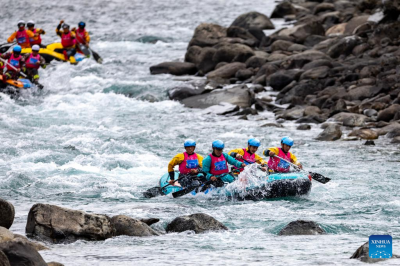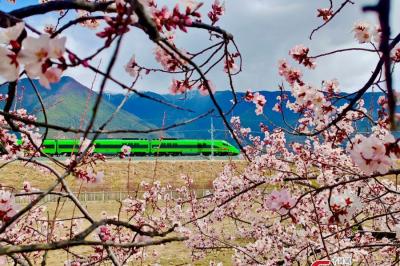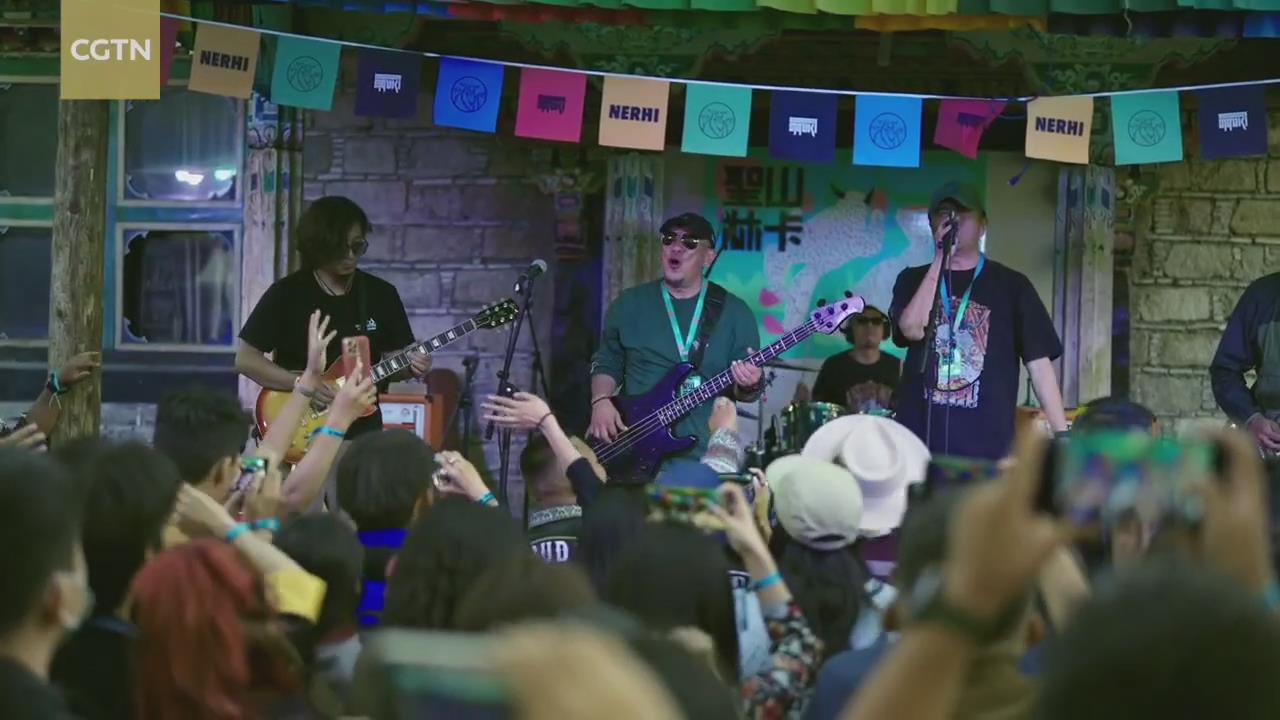| The White Hose ratified the Reciprocal Access to Tibet Act of 2018 in December, urging the Chinese government to give US journalists, diplomats and tourists unrestricted access to the Tibet autonomous region, failing which it would deny Chinese officials deemed responsible for restricting access to Tibet entry to the United States.
In a report published on its official website recently, the US Department of State claimed, without any basis, that the Chinese government had systematically obstructed US officials, journalists and tourists from entering Tibet and other areas inhabited by ethnic Tibetan people in 2018. China has always kept the doors to Tibet open to the outside world. But while doing so, it has introduced certain measures, in accordance with the law, for foreigners' entry into the region. More important, Tibet is China's internal affair which brooks no interference from any foreign country. China committed to opening up further China remains committed to keeping the doors to Tibet open, especially because the policy has helped China to march toward prosperity. In fact, China's rapid development over the past four decades is inseparable from the policy of reform and opening-up. At the fifth central work symposium in Tibet in 2010, the central authorities proposed to develop Tibet into an important world tourist destination, and at the sixth symposium in 2015 they vowed to forge Tibet into an important channel of China's opening-up to Southeast Asia, by making it an important part of the Belt and Road Initiative. In recent years, the central authorities have made efforts to further open up Tibet and build it into a global tourism cooperation zone. From 2014 to 2018, Tibet held four international exhibitions on its tourist culture, with the fourth one in 2018 bringing together top officials from foreign countries, including foreign diplomats in China, representatives from global tourism organizations, and scholars from across the world. 'Lhasa consensus' shows constructive suggestions At the 2016 forum on Tibet's development in Lhasa, more than 130 scholars, journalists, diplomats and entrepreneurs from over 30 countries, including the United States, Germany, India and Sri Lanka, contributed constructive suggestions on the development of Tibet, which found voice in the 2016 "Lhasa consensus". These moves show that the central government has been supporting the opening-up initiatives beneficial to Tibet's development and the welfare of the Tibetan people. The number of tourists to Tibet has been rising steadily-from 244,400 visits in 2014 to 476,200 visits in 2018, with those of foreigners increasing from 200,000 to 241,600. The sources of foreign tourists have widened, too, because the door to Tibet is open to people of all countries. From 2010 to 2018, Tibet received tourists from 113 countries, with tourists from developed countries such as the US, Germany, the United Kingdom and Japan making up the largest cumulative group. Actually, with American tourists accounting for 16.1 percent of the total visits, the US is the single largest source of foreign tourists to Tibet. Tibet is low on oxygen and has a fragile ecosystem. Therefore, it cannot afford to play host to an endless number of tourists. Also, the region is home to a unique culture and customs. So the central government has no choice but to take suitable measures to protect and preserve these delicate features of the region. Plus, the government attaches great importance to tourists' safety. Tibet's average altitude is about 4,000 meters above the sea level, with some passes situated at more than 6,000 meters. Such high altitudes and the treacherous topography of the region can be potentially dangerous for many people, especially for those who have heart and lung diseases or high blood pressure. Tourists' safety is of utmost importance Besides, Tibet is sparsely populated, with a population density of only 2.74 per square kilometer. This means tourists needing emergency treatment could face trouble, and if people are stranded in remote locations, they cannot be easily rescued. Never mind the complex and variable climate in Tibet and the ever-present threat of natural disasters such as landslides, high-velocity winds and sudden snowfall. For the sake of their safety, the central government has advised foreign tourists to travel in groups and visit only those areas where rescue operations can be readily launched. The central government also attaches great importance to striking the right balance between tourism development and ecological protection in Tibet. The Qinghai-Tibet Plateau is the source of quite a few major rivers and the "regulator" of climate in Asia, and therefore its ecosystem is vitally important to the whole of Asia. The unrestricted entry of a large number of tourists to Tibet would cause irreparable damage to the region's ecological environment and risk exacerbating global warming and the melting of glaciers. It is such concerns that have prompted the central government to promote the coordinated development of tourism in Tibet. Given the fragile ecosystem of Tibet and the potential dangers its topography and climate pose to tourists, it is natural for the central government to limit the number of tourists to the region. Protecting Tibet's unique culture is also high on the central government's agenda. So while boosting the development of tourism, the central government attaches equal if not more importance to guiding tourist behaviors and controlling the number of tourists, in order to not cause any harm to Tibetan culture or its environmental ecology. World Cultural Heritage sites need to be protected Potala Palace, Jokhang Temple and Norbulingka Summer Palace were included on the UNESCO World Cultural Heritage list in 1994, 2000 and 2001, respectively. In 2015, the Tibet autonomous region government promulgated a regulation on cultural heritage protection for Potala Palace, establishing a dynamic detection mechanism that can monitor the real-time flow of tourists to the heritage site and its impact on the cultural relics. The mechanism can warn authorities when visitors in the palace reach the optimum number so they can control their entry. China will continue to further open up, as President Xi Jinping has said. Accordingly, the scale of foreigners' access to Tibet will expand. As such, the "systematic obstruction" to foreigners' entry into Tibet, as claimed by the US act, is a gross distortion of facts and a flagrant interference in China's internal affairs, driven by ulterior political motives. People of all ethnic groups in Tibet are working with their compatriots in the rest of country to build a well-off society in an all round way by 2020, and the central government will not allow Tibet's stability and the well-being of Tibetan people to be harmed. Any country that wants to develop friendly relations with China must respect its sovereignty and territorial integrity, and refrain from interfering in its internal affairs-which is also a basic norm of international relations. So people in the US trying to use Tibet as an excuse to interfere in China's internal affairs and thus disrupt and undermine Sino-US cooperation and exchanges should stop doing so, because they will never succeed in their evil designs. |
- Home
- News Tibet |Exclusive |China |World |Related News |Latest
- Documents White Papers |Others
- Photo Politics |Economy & Society |Culture & Religion |Human & Nature |Beautiful Tibet |Other Tibetan-Inhabited Area |Exchanges |Related
- Video News |Documentary |Micro-Video |Entertainment
- Art
- Tourism
- In Focus
- About Tibet






